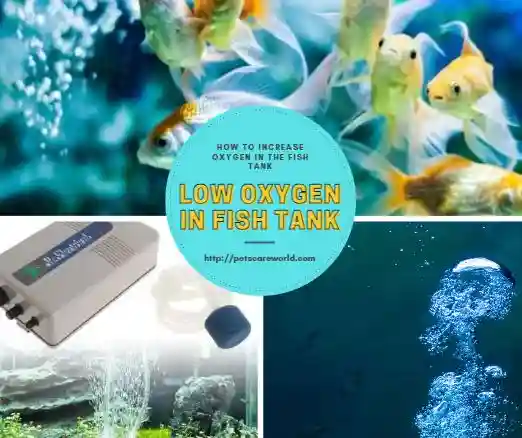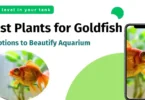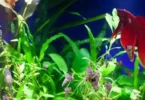If you are an aquarium enthusiast, you understand the importance of maintaining a healthy and thriving fish tank environment for your aquatic pets. One vital factor that significantly impacts the well-being of your fish is the oxygen levels in the tank. Proper oxygenation is essential for their survival and overall health. In this article, we will explore the signs of low oxygen in fish tank and learn how to address and prevent this issue to ensure your finned friends lead a happy and healthy life.
Understanding Oxygenation in Fish Tanks
Maintaining an aquarium is a delightful and rewarding experience. But it comes with responsibilities. One of the primary responsibilities is ensuring that your fish receive an adequate supply of oxygen. Oxygen is vital for respiration and overall health. Understanding the signs of low oxygen in fish tank is important for prompt action and the well-being of your beloved aquatic companions.
Signs of Low Oxygen in Fish Tank
In a fish tank, oxygen is exchanged at the water’s surface. The water absorbs oxygen from the surrounding air, and the fish breathe this dissolved oxygen through their gills. Adequate oxygenation is necessary for the fish to function optimally and thrive.
- Gasping at the Water Surface: One of the most apparent signs of low oxygen levels is when you see your fish gasping for air at the water surface. Gasping is a clear indicator that the dissolved oxygen in the tank is insufficient for the fish to breathe properly.
- Lethargic Behavior: Fish that do not receive enough oxygen may exhibit lethargic behavior. They may seem sluggish, show less activity, and have difficulty swimming properly.
- Fish Hanging Near the Filter Outlet: When oxygen levels are low, fish may position themselves near the filter outlet where there is relatively more oxygenation due to the water movement. This behavior is an attempt to access more oxygen.
- Reduced Appetite: Low oxygen levels can lead to stress and a reduced appetite in fish. If you notice your fish are not eating as much as usual, it could be a sign of oxygen deficiency.
- Gulping for Air: Fish may resort to gulping air from the water surface if they are not getting enough oxygen from the water. This behavior is unnatural and indicates a severe lack of dissolved oxygen.
Causes of Low Oxygen Levels
- Overstocked Aquarium: An overstocked aquarium means more fish produce more waste, leading to increased oxygen demand. A crowded tank can quickly deplete oxygen levels, endangering the fish.
- Poor Water Circulation: Insufficient water circulation can create stagnant areas in the tank, reducing the contact between water and air at the surface, which hampers oxygen absorption.
- High Water Temperature: Warmer water holds less dissolved oxygen than cooler water. High water temperatures can significantly reduce the amount of oxygen available to the fish.
- Lack of Live Plants: Live aquatic plants play a vital role in maintaining oxygen levels in the tank. They produce oxygen through photosynthesis, benefiting fish and other aquatic organisms.
- Excessive Organic Waste: Decaying organic matter, uneaten food, and fish waste can lead to a buildup of harmful compounds that deplete oxygen levels in the tank.
Measuring Oxygen Levels in the Fish Tank
- Test Kits: Using test kits specifically designed to measure oxygen levels can provide accurate readings, helping you monitor and address any oxygen fluctuations.
- Portable Oxygen Meters: For precise and on-the-spot measurements, portable oxygen meters are handy tools that allow you to check the oxygen levels at various locations in the tank.
How to Increase Oxygen in Fish Tank
- Adding Aeration Devices: Air stones, air wands, and bubble walls are a great way to introduce oxygen-rich bubbles into the water, enhancing oxygenation.
- Improving Water Circulation: Installing a reliable aquarium pump can ensure proper water circulation, preventing stagnant areas and promoting oxygen absorption.
- Installing an Air Pump: An air pump connected to air stones can significantly increase the surface area of oxygen exchange, benefiting the fish.
- Introducing Live Plants: Live plants are not only aesthetically pleasing but also serve as natural oxygen producers, enhancing the overall oxygenation of the tank.
- Regular Cleaning and Maintenance: Consistent tank maintenance, including water changes and debris removal, helps reduce organic waste buildup and maintains better oxygen levels.
Preventing Low Oxygen Levels
Preventing low oxygen levels is essential for the well-being of your fish. Regularly test the water for oxygen levels. Take necessary steps to ensure proper aeration, water circulation, and tank cleanliness.
- Proper Tank Size and Stocking: Start by selecting an appropriate tank size for the species and number of fish you intend to keep. Overcrowding can lead to increased oxygen demand and negatively impact water quality. Research the specific needs of your fish and avoid overstocking the tank.
- Adequate Filtration: A well-functioning aquarium filter is crucial for maintaining water quality. The filter helps remove harmful compounds, including ammonia and nitrites, which can contribute to oxygen depletion. Regularly clean and maintain the filter to ensure it operates efficiently.
- Water Circulation: Proper water circulation helps distribute oxygen throughout the tank and prevents stagnant areas. Consider adding additional circulation pumps if necessary, especially in larger tanks, to improve oxygenation.
- Temperature Control: Maintain a stable water temperature within the appropriate range for your fish species. Warmer water holds less dissolved oxygen, so avoid extreme temperature fluctuations that could stress the fish and affect oxygen levels.
- Live Plants: Incorporating live aquatic plants is a natural way to boost oxygen levels in the tank. Through photosynthesis, plants release oxygen into the water, benefiting the fish and creating a healthier environment. Select plant species that are compatible with your fish and aquarium conditions.
- Avoid Overfeeding: Overfeeding can lead to excess organic waste, which consumes oxygen as it decomposes. Feed your fish in moderation and remove any uneaten food promptly to prevent waste buildup.
- Regular Water Changes: Performing regular water changes is vital for maintaining water quality and oxygen levels. Partial water changes remove accumulated waste and replenish oxygen in the tank.
- Use Aeration Devices: Aeration devices, such as air stones, air wands, or bubble walls, are effective tools to increase oxygenation. These devices introduce bubbles into the water, enhancing oxygen exchange at the surface.
- Monitor Oxygen Levels: Invest in a reliable oxygen test kit to regularly monitor oxygen levels in the tank. Regular testing allows you to identify any fluctuations and take corrective action promptly.
- Address Algae Growth: While algae can contribute to oxygen production during the day through photosynthesis, excessive algae growth can consume oxygen at night. Control algae growth through proper lighting and nutrient management.
- Avoid Drastic Changes: Minimize sudden changes in water parameters, such as pH and hardness, as they can stress the fish and affect their ability to cope with oxygen fluctuations.
By following these preventative measures, you can create an environment where oxygen levels remain optimal for the health and happiness of your fish. Regular maintenance, attention to water quality, and understanding the specific needs of your aquatic pets will help you establish a balanced and thriving aquarium ecosystem. Remember, prevention is always better than cure when it comes to maintaining the well-being of your beloved finned friends.
Conclusion
Maintaining an optimal oxygen level in your fish tank is essential for the health and happiness of your aquatic pets. Understanding the signs of low oxygen and its causes can help you take proactive measures to ensure your fish thrive in a well-oxygenated environment. Remember to regularly monitor the oxygen levels, keep the tank clean, and consider adding live plants or aeration devices to create a harmonious and oxygen-rich habitat for your aqua friends.
Frequently Asked Questions (FAQs)
How often should I test the oxygen levels in my fish tank?
It is recommended to test the oxygen levels at least once a week, especially if you notice any abnormal fish behavior.
Can low oxygen levels be fatal for fish?
Yes, low oxygen levels can lead to stress and compromise the immune system of fish, making them susceptible to diseases and even death.
Can I use a regular air pump for my fish tank?
Yes, a properly sized air pump connected to air stones or other aeration devices can effectively increase oxygen levels in the tank.
Will live plants provide enough oxygen for my fish?
While live plants contribute to oxygen production, they may not be sufficient for heavily stocked tanks. Consider combining plants with aeration devices for optimal results.
Can low oxygen levels affect water quality?
Yes, low oxygen levels can lead to the production of harmful compounds, negatively impacting water quality and the health of your fish.







